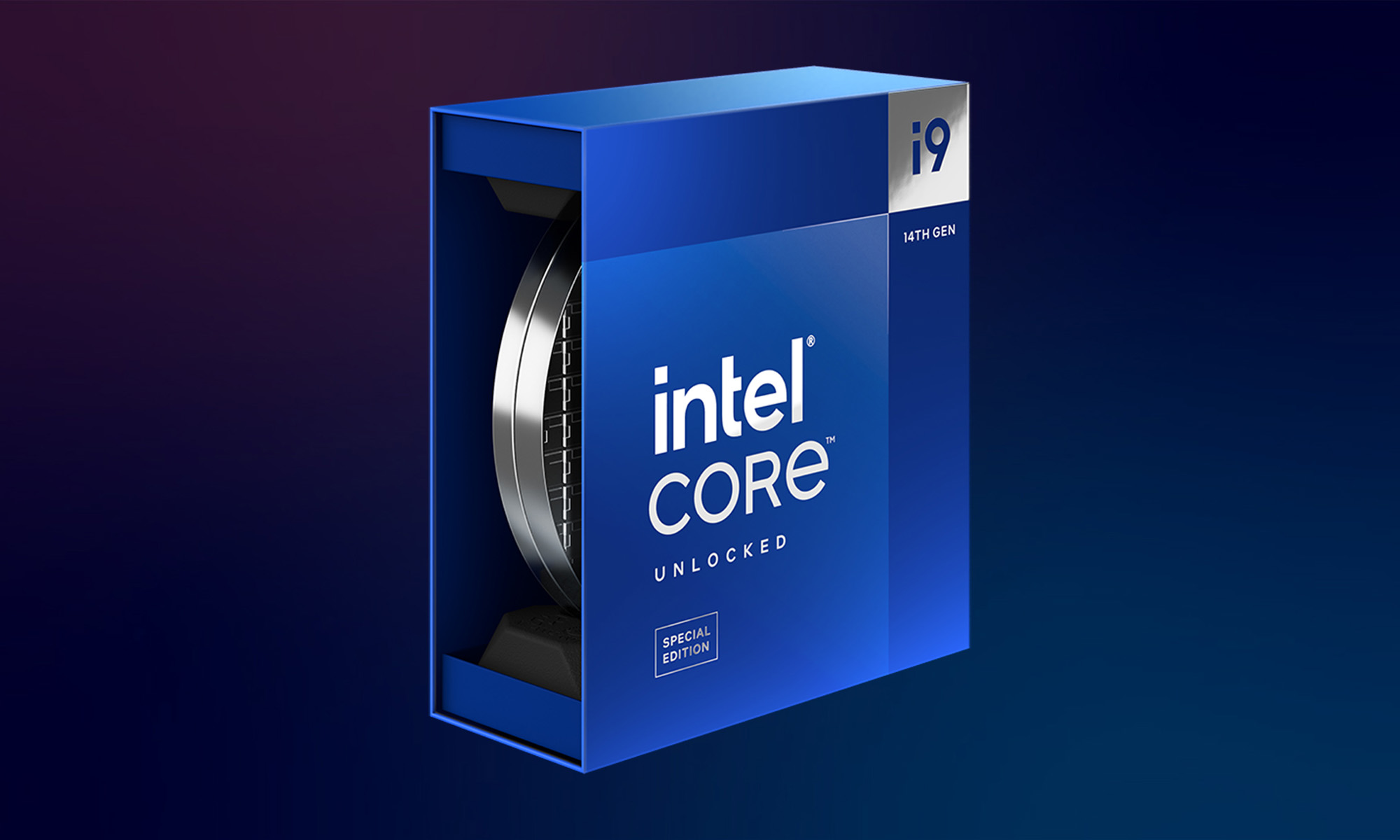News
Intel’s New Core i9 Desktop CPU Breaks Another Speed Record
The i9-14900K packs 24 cores and 32 threads of raw processing power.

Intel has broken another speed record with its latest desktop CPU. The company’s new Core i9-14900KS processor can reach speeds of up to 6.2GHz without overclocking, making it the fastest desktop CPU available to PC enthusiasts. The milestone beats another Intel record from last year, where its last processor maxed out at a still impressive 6GHz.

In addition to record-breaking clock speed, the i9-14900KS also boasts a 24-core, 32-thread architecture along with a 36 megabyte Smart Cache, which is a proprietary Intel technology that shares cache memory between the different cores. Intel says the feature allows for “powerful performance in gaming and content creation workloads”.
The i9-14900K also makes use of Intel’s Thermal Velocity Boost, which is a feature of 11th generation and later Intel Core chips that maxes out the clock frequency by 100 MHz when temperatures are below 70 degrees C, or 158 degrees F.
As for real-world statistics, the company is confident that gamers will enjoy up to 15% better performance. Content creators will also be happy to hear that complex workflows will receive a massive 73% boost. The i9-14900KS is compatible with the latest Z790 and Z690 motherboards, but Intel recommends ensuring the bios is updated to ensure optimum results.
Also Read: Getting Started With Google Gemini: A Beginner’s Guide
Although the speed of Intel’s i9 is impressive, a team from ASUS ROG has already claimed another four world records by overclocking the new chip, pushing the CPU to a frankly astounding 9.1 GHz.
The Core i9-14900KS is available from stores today and starts at $700. The chip will be available for DIY PC builders as a standalone item but should soon find its way into OEM systems very soon.
News
Alienware Just Announced Six New Gaming Monitors
The new models include three QD-OLED and three budget-friendly QHD options, expanding the company’s lineup for all gamers.

Alienware has just updated its gaming monitor lineup with six new additions, including the highly anticipated Alienware 27 4K QD-OLED Monitor. The latest wave of releases is set to reach more gamers than ever, offering high-end QD-OLED displays alongside more budget-friendly options.
The latest displays clearly show that the company is doubling down on QD-OLED with three new models sporting the technology. A redesigned Alienware 34 Ultra-Wide QD-OLED Monitor is also making a return, further refining what is already a fan-favorite display.
A Unified Design: The AW30 Aesthetic
All six monitors feature Alienware’s new AW30 design language, first introduced at CES. The AW30 aesthetic brings a futuristic, minimalist look that unites the entire lineup under a cohesive visual identity.
Pushing QD-OLED Even Further
The refreshed Alienware 34 Ultra-Wide QD-OLED Monitor (AW3425DW) builds on its predecessor’s success with a 240Hz refresh rate (up from 175Hz) and HDMI 2.1 FRL support. It also gains G-SYNC Compatible certification alongside AMD FreeSync Premium Pro and VESA AdaptiveSync, ensuring ultra-smooth performance. With a WQHD (3440×1440) resolution and an 1800R curve, this display enhances immersion for both gaming and cinematic experiences.
For those who crave speed, the Alienware 27 280Hz QD-OLED Monitor (AW2725D) pairs a high refresh rate with QHD resolution, balancing sharp visuals with ultra-smooth gameplay. Meanwhile, the Alienware 27 4K QD-OLED Monitor (AW2725Q) delivers stunning clarity with an industry-leading pixel density of 166 PPI, making it the sharpest OLED or QD-OLED monitor available.
Also Read: Infinite Reality Acquires Napster In $207 Million Deal
Worried about OLED burn-in? Alienware’s entire QD-OLED lineup comes with a three-year limited warranty covering burn-in concerns, offering peace of mind for gamers investing in these high-end displays.
Bringing QHD To A Wider Audience
Alongside QD-OLED, Alienware is also releasing three new QHD gaming monitors aimed at more price-conscious gamers. The Alienware 34 Gaming Monitor (AW3425DWM), Alienware 32 Gaming Monitor (AW3225DM), and Alienware 27 Gaming Monitor (AW2725DM) provide a range of sizes and formats to suit different preferences:
- The Alienware 34 Gaming Monitor (AW3425DWM): An ultrawide (WQHD) option for a panoramic, immersive experience.
- The Alienware 32 Gaming Monitor (AW3225DM): A standard 16:9 panel for a traditional but expansive desktop setup.
- The Alienware 27 Gaming Monitor (AW2725DM): A 27” display offering the same performance in a more compact form factor.
All three gaming monitors feature a fast 180 Hz refresh rate, a 1ms gray-to-gray response time, and support for NVIDIA G-SYNC, AMD FreeSync, and VESA AdaptiveSync to eliminate screen tearing. Additionally, with 95% DCI-P3 color coverage and VESA DisplayHDR400 certification, these displays deliver vibrant colors and high dynamic range for lifelike visuals.



























